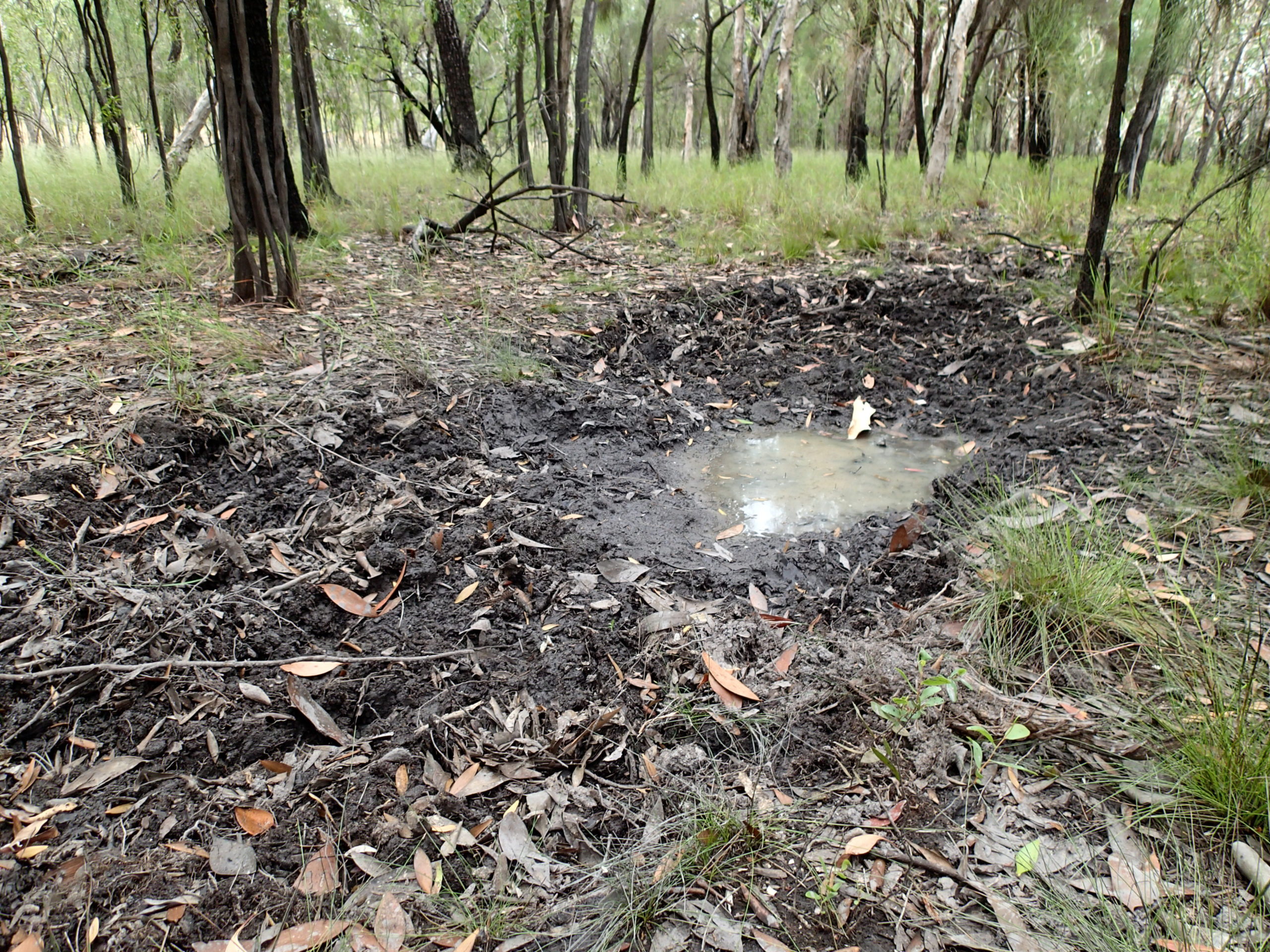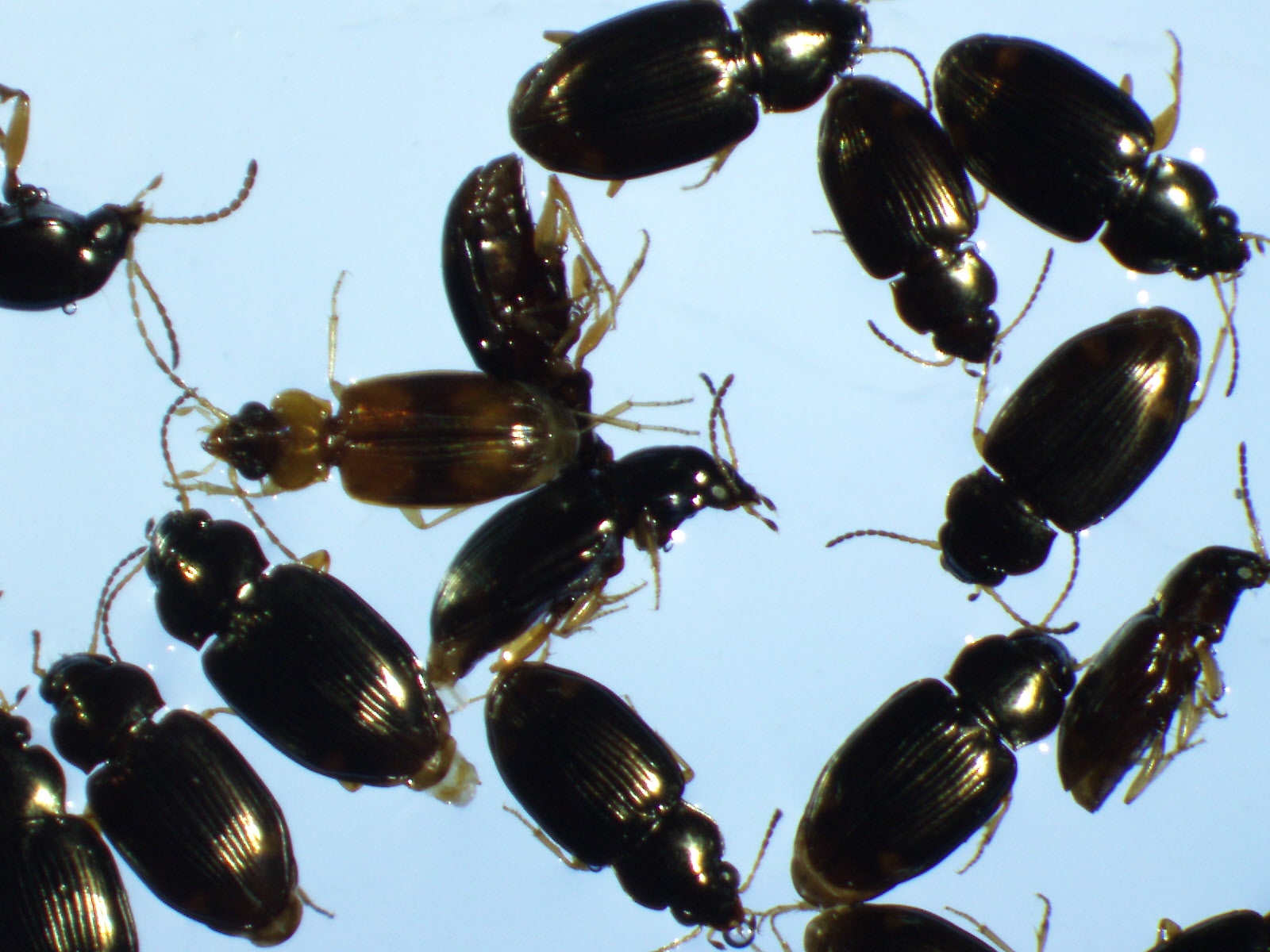28 October 2020
As the water at a wetland’s edge retreats, exposed sediments provide rich habitat for ground-dwelling invertebrates like beetles, mites, springtails and spiders.
But these places are also heaven-on-earth for feral pigs – there’s plenty to eat and soft mud to wallow in. As they search for food in the sediments, their rooting and pugging (disturbing the ground with their snouts and feet) destroys the habitat of invertebrates, or simply squashes them – if the pigs don’t eat them first.

Pigs have wallowed in this wetland and destroyed the habitat of invertebrates. Photo by Queensland Department of Environment and Science.
Hub research in north Queensland’s Archer River catchment, led by Dr Jonathan Marshall of the Queensland Department of Environment and Science, has shown that feral pig damage significantly diminishes invertebrate biodiversity in wetland sediments.
Two-thirds of the ground-dwelling invertebrates they recorded were less likely to be found where pig damage was high. Certain types of spiders, beetles, snails and freshwater crabs – species likely eaten by pigs – were not found in places with intense pig activity.

Their methods to assess pig damage and invertebrate responses can be adapted to monitor the effectiveness of activities to control feral pigs.
This research is part of a larger project that aims to define indicators of success for feral animal management in northern Australia, led by Dr Justin Perry of CSIRO.
Want to know more about the Resilient Landscapes Hub's activities and our research into practical solutions to environmental problems? Stay informed about activities, research, publications, events and more through the Hub newsletter.
"*" indicates required fields